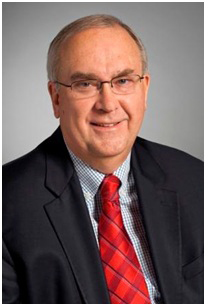Distributed transmission emerging as the future of DTV broadcasting
As the over the-air-broadcast industry seeks to establish its place in the future of television distribution, it is looking past high-powered, single-stick transmission to a distributed model of multiple lower-power systems that

ring a market, thereby ensuring better signal coverage for mobile video and other next-generation viewing applications.
However, such systems, also known as single-frequency networks (SFNs), are most successful when using a modulation scheme (OFDM) that is only approved by the FCC for specific applications. The mandated U.S. standard is one developed by the Advanced Television Systems Committee (VSB).
There are a few SFNs now deployed around the country in geographically diverse markets, providing extended reach from a single transmit site. Idaho Public Television uses a distributed transmission system or SFN. Basical
ly, a full-power origination site feeds a series of lower-power transmitters throughout the state.
Sinclair Broadcast Group, which has promoted OFDM for the use in the U.S. for at least a decade, was recently granted a six-month, temporary license to broadcast using the DVB-T2 European standard at WNUV-DT, the CW affiliate in Baltimore (where Sinclair is headquartered). Many will be watching the results of this test in comparison to what can be accomplished with the ATSC spec.
“I think it’s fairly obvious that the next digital broadcast system that gets adopted will be an OFDM- or multicarrier-based system,” said Jay Adrick, a long-time ATSC committee member who recently retired as vice president of Broadcast Technology for Harris and now serves as a technology advisor to the company’s Transmission business unit.
[Adrick has been named the recipient of the 2013 NAB Television Engineering Achievement Award, and will be honored at the 2013 NAB Show Technology Luncheon, Wednesday, April 10, in Las Vegas.]
Adrick was a key figure in the development of the current A/153 ATSC Mobile DTV system.
“We need this in order to accommodate mobility and because of the fact that broadcasters have to employ a more cellular approach in the future,” he said.
That cellular approach is part of the work being done within the ATSC on what will eventually be called “ATSC 3.0,” which is expected to be adopted by the U.S. government and the FCC in 2016.
“Through experiments like what Sinclair is doing, we're going to learn something,” Adrick said. “That’s good for the industry.”
Next-generation television

Indeed, the goals for what the next-generation of broadcasting should look like are now being written — and are nearly finalized within the ATSC’s TG-3 group — for the “physical layer” of transmission. They include OTA Mobile DTV and UltraHD signal distribution. Adrick said the new standards work began with the physical layer. After that, Adrick said, a “management layer” and then an “applications” layer will have to be finalized.
To help forward-looking customers today, Harris has announced (and will show at NAB) a comprehensive solution for accommodating SFNs that is fully compliant with the newly released ATSC standard (ATSC A/110-2011) for transmitter synchronization. The solution includes the Harris Apex M2X exciter and Synchrony MNA single-frequency network adapter. The systems can be used in any Apex M2X-enabled transmitter, including all Harris Broadcast Maxiva UHF and Platinum VHF models. Existing transmission customers can upgrade in the field via a software download.
Customers of the Harris solution can start with a traditional main channel and a full-power transmitter and then feed a series of lower-power transmitters deployed around a market. Leveraging the ATSC A/110-2011 standard, the equipment ensures that all of the transmitters within an SFN are tightly synchronized. Without this synchronization, a signal cannot be passed from one transmitter to another, which helps consumers maintain a contiguous signal across a market.
Adrick said the ATSC A110-2011 spec, designed for simultaneous fixed and mobile DTV broadcasting, defines the interface between the transmission adapter (used for SFNs, mobile DTV, or both) and the exciter. Harris has implemented the spec in all of its transmission products, from its lowest power (5W) system all the way to the high-end models. It’s also implemented in the Harris Synchrony network adapter used to generate the A110-2011 signal for the multiple transmitters.
Several transmission manufacturers have also embraced the new ATSC spec, but they have not implemented it in as a comprehensive a system as Harris has.
“We now offer both ends of the equation for SFNs and mobile DTV broadcasting, in a 1RU package,” Adrick said. “There are places in the U.S. where an SFN makes sense, and we’re trying to help those in need achieve their goals. We see significant potential for the deployment of SFNs in greater numbers than we see today.”
OFDM in the U.S.
The ATSC 3.0 spec is designed to carve out a space for broadcasters after the FCC spectrum auctions, set to take place next year.
Assuming that broadcasters continue to have access to 6MHz of bandwidth after the auctions, some scenarios for freeing up more spectrum include broadcasters on adjacent channels emitting from a single transmitter and then “bonding” their channels together. Adrick said once the repacking process is completed (after the FCC spectrum auctions), it‘s one scenario being looked at seriously.
“There’s no doubt that we have to get past the repacking stage and then look at how to make better use of what’s left after the repack,” Adrick said. “At the same time that wireless carriers are saying they need more bandwidth, broadcasters also need more bandwidth. I think if you spoke to some of the more progressive broadcasters, they would tell you they are out of bits. They could do more if they had more spectrum available. So, we need to deliver more bits and have perhaps a bit less spectrum to do it in. ATSC 3.0 is focused on establishing a solution.”
For the application layer, advancements in compression like High Efficiency Video Coding (HEVC, H.265), which is supposedly twice as efficient as MPEG-4 (H.264), will free up more bandwidth for broadcasters that choose to broadcast an HD channel, several digital subchannels and a mobile DTV service.
“I believe that anything that comes out of the ATSC will be better than what DVB-T2 [which uses OFDM] can deliver,” Adrick said. “It has to be because one of the future requirements is for 4K broadcasting. In order to broadcast UltraHD, we’re going to need to make the most efficient use of the available bandwidth. We’re not to going to get it using RF spectrum; we're going to have to create it via modulation efficiency.”
The new Harris package will not be compatible with ATSC 3.0, but “it gets broadcasters thinking and going in the right direction,” Adrick said. “We want to ensure that broadcasters have access to an all-in-one terrestrial and mobile platform that improves over-the-air signal coverage and maximizes viewing audiences.”
With new ATSC A110-2011-compliant solutions from manufacturers, broadcasters now have the flexibility to cost-effectively improve operations and extend their reach using lower-cost transmission sites. There was a time when 8-VSB vs. COFDM was hotly debated in the U.S. The FCC chose the ATSC version (VSB) in 1998. Will it consider OFDM in the future?
“One can only hope that the FCC will sit up and pay attention to what’s going on, and rather than putting the industry through two transitions — repacking and the eventual move to ATSC 3.0 — maybe we can do all of that in one shot,” Adrick said.
Get the TV Tech Newsletter
The professional video industry's #1 source for news, trends and product and tech information. Sign up below.
